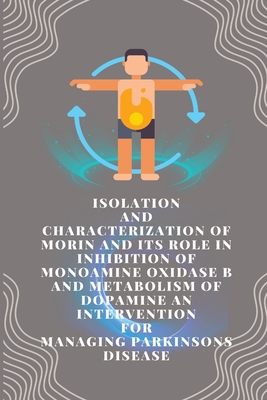You are here
Back to topIsolation and characterization of morin and its role in inhibition of monoamine oxidase b and metabolism of dopamine an intervention for managing park (Paperback)
Description
leads to controlled synthesis and degradation of such neurotransmitters. A century ago, Mary L.C. Hare and her National Institutes of Health colleagues discovered MAOs (EC 1.4.3.4) (Hare, 1928). Because of the first MAO, named "tyramine oxidase," researchers can now look into the possibilities of developing medicines to treat various neurological disorders and biological targets like MAOs (Yeung et al., 2017). Exogenous and endogenous monoamines can be oxidised by the FAD-dependent enzyme MAOs, which can be located on the mitochondrial outer membrane (Figure 1A). The central and peripheral nervous systems (CNS and PNS) monoamine neurotransmitter levels are crucially influenced by MAOs (Setini et al., 2005). MAO-A and MAO-B, the two MAO isoforms, are found in most mammalian organs. Due to differences in substrate selectivity and enzyme activity, the two MAOs are unable to deactivate a wide range of neurotransmitters because of their differing regions of placement in the human brain and peripheral nervous system (Shih et al., 1999; Binda et al., 2002; Castagnoli et al., 2003). The 5-hydroxytryptamine (5-HT) is metabolised by MAO-A, whereas MAO-B selectively metabolises phenylethylamine (PEA) and benzylamine (BA) (Bellen HJ et al., 2010). Catecholamines as adrenaline, noradrenaline, and dopamine serve as.
